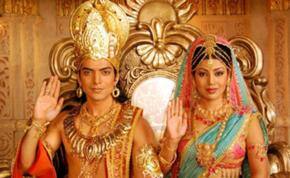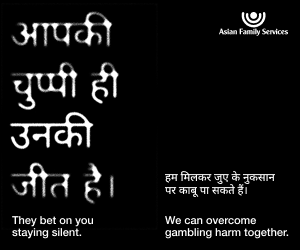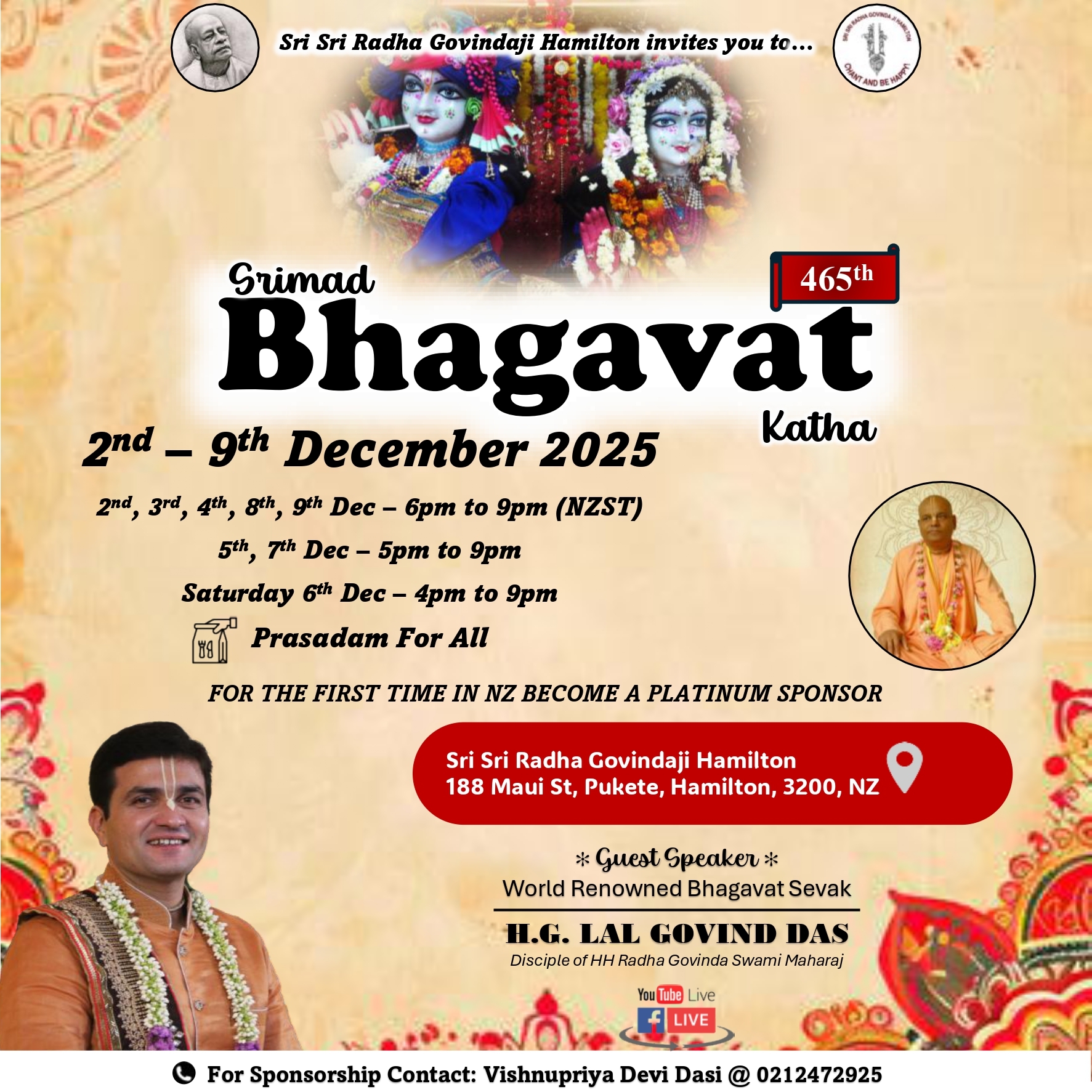Bollywooding of Hinduism

How do we know to be a Hindu? For the Indian Diaspora, the question is very important as we only appear to know of how to be a Hindu through Hindi (or other Indian language) movies.
For several decades, until around the 1970s, hagiographies -- such as the famous films on Tukaram (1936) and Dnyaneshwar/Jnaneshwar (1940) -- and a genre known as ‘mythologicals’ were common in Hindi and regional cinemas. [Vinay Lal}
We, especially those living out of India, grew up with such mythologicals. We knew what Ravana looked like and how he acted when he kidnapped Sita. We saw Rama break down and cry when faced with the loss of his beloved. We saw the pranks of the child Krishna, the teenager Krishna stealing the clothes of the gopikas when they were bathing, his courage and anger when he tackled his blustering uncle, a few pot-bellied wrestlers and a ‘mad’ elephant that succumbed too quickly and couldn’t act mad even if it wanted to.
We saw Shiva dance the tandev (badly, too) or ride a bull surrounded by idiotic and comical ganas, singing a Bollywood song (again badly), going off to get married; saw Brahma lose one of his head or spouting words of wisdom (mostly saying ‘go to Lord Vishnu for help’); saw Vishnu lolling on Sesh Naag, or throwing his sudarshan chakra to chop someone’s head off, or being benign to the devas as they stood around looking sorry and complaining about the asuras.
The chance of a quick buck overcame sanctity where these films were concerned. While money was spent like water on blockbusters and multi-starrers like Amar Akbar Anthony, Coolie and Mard, the mythologicals of the 70s had to do with badly painted props, lousy camera work and lowest of low-tech visual effects. Not to forget, the cheapest of the cheap actors.
Yet, we lapped it up. After all they were about gods, weren’t they? What I think is that they tainted our image and imagery of our god/gods, almost for ever.
Narada, the messenger of the gods, is wicked, working his manipulations everywhere, giving us the epitome of the troublemaker (or the devil’s advocate, for those who want to read more into his onscreen character). Rakshasas look the same in all the movies – sometimes played by the same person in several movies.
Shiva is the slightly befuddled divine being who doesn’t really know what is happening. He has moments of clarity (or epiphanies?) and then does a bender, ridding the world of everything, including indiscriminately killing huge numbers of human beings and animals and destroying everything else. Either he is comical, or wrathful, or just wasting his time among the snow, lost in meditation (also done very badly).
Vishnu is partisan, only loving the devas (even if they are wrong), seen to be manipulative (or keenly aware of what needs to be done), omniscient but allowing trouble to develop which puts his devotees in all sorts of trouble. He is always dolled up in a near-see through dhoti, two fake arms sprouting from his shoulders, a mukut (helmet of gold) that gave him a stiff pose.
Largely the actors that played him were skinny people without much definition, once, I think, an actor with a slight pot belly. On some occasions Vishnu was painted blue. This is not what God looks like but the images stay so strongly in our minds, nevertheless.
Bollywood put in a masala formula to mythologicals that has psychologically marred us, almost to the point we really started questioning the validity of our mythology, even our sacred books.
I haven’t kept up with the recent spate of mythologicals on the small screen but have seen a few and what I have seen is pathetic. Basically the 70s mythologicals have established the characters of our gods which continues to this day on the small screen, generally called the idiot box.
Shiva continues the role that was latched on to him and in some cases he has become just a dance deity. Other representations are stereotypes of the pathetic kind. Even the goddesses revert to type, bulging eyes and grim visage to show anger, the subdued archetypal Indian women to show grace, the benign mother role when protecting her devotee in trouble.
This is all a nautanki (a rustic play) that Bollywood squeezes time and again to fill someone’s pockets and we continue to lap it all up. These are not the gods thinking Hindus worship, love and adore in their daily lives.
Why do we continue such ‘devotion’ when it is apparent that we are seeing actors in roles of god in movies designed with one purpose – to make money? For the simple reason that we don’t have any pictures or images of Lord Rama or Krishna. All we have is the written word, and some description of these personages in them. And these actors provide a concrete image of what we think god should be.
Idol worship is an important part of Hinduism. Others may call it paganism, heathenism (it is their problem, anyway!) but it forms an integral part of the worship of a Hindu. While God/Brahman/the Absolute is an abstract idea, to worship we need something concrete or the mind will balk.
That is why we have pictorial representations of Shiva, Vishnu, and all the avatars as well as many other gods and goddesses. We need an image to love and talk to.
But not in the Bollywood way, for God’s sake! God, according to Bollywood, now has a popular shape and form and can talk in a particular way, thanks to popularised roles in Hindi-language cinema. Similar considerations may, perhaps, be entertained about films in Tamil, Kannada, Gujarati, and other Indian languages. [Vinay Lal]
Some images are utterly silly – Biswajeet as Lord Rama in one of the 70s mythological is a classical case of Bollywood fitting God to an actor. Other actors adopt a role and make it their own - Telugu actor N. T. Rama Rao became a god on his own right among his followers. He played Lord Krishna in 17 movies and went on to become a extremely successful politician, almost divine in his victory over his opponents.
What other imagery of God do we have from Hindi movies that have crept into our mind-sets? We see Sudhir Dhalvi as Shirdi ke Sai Baba, Arun Govil as Lord Rama and some other actor as Krishna, depending on whether we are Mahabharata (the series) fans or fans of the numerous Hindi movies on Lord Krishna.
These mental images intrude, become assimilated and can become part of our worship. But we are luckier than some in India in the sense we don’t end up worshipping these actors as gods themselves. It is true – Arun Govil was mobbed as Lord Rama, camphor waved around him, his feet touched by ardent devotees. North India came to a standstill whenever Ramanand Sagar’s Ramayan was televised. This was in the 80s, I think.
Sudhir Dalvi almost became synonymous with Shirdi Sai Baba – some say they even see him in their mind’s eye as Shirdi Baba despite the fact we actually have existing pictures of Shirdi Sai Baba.
The Bollywood influence continues, unabated. So, how do we talk to God? We do it the Amitabh Bachchan style: starting with great anger and ending in tears as we spew out our vehemence for what God is doing to us.
Or we sing our hearts out, mimicking some Bollywood songster/actor (both tone and pose) who did a great onscreen job of a rendering a bhajan. Rishi Kapoor did a great one for Shirdi Baba, I believe.
Or if we are female, we adopt the subdued, tearful approach, putting our lives in the hand of the God, meek and humble, weak and unable.
Or nowadays we do it the modern way – talk to god as a good pal (or a kindly uncle), with a quick uplift of the eyes or head heavenwards, a silly smile a la Sharukh Khan, and a deprecating shrug.
Or assume the pose of a sadhu/rishi/jnani as we have seen in a movie.
The rendition of OM (mostly) is also very Bollywood. A Christchurch man, originally from Calcutta (Kalkot), once complained to me that a visiting swami was doing the Om all wrong – starting with an emphasis on A, a rising pitch on U and a long take on M. It was wrong he said – apparently because Bollywood does not do it that way. He was a bit upset when I confirmed that it was the proper way to render the Om.
Even in recent movies like Lagaan, the stereotype relation with god persists. Towards the end of the movies (before the big match) the villagers sing their heart out collectively to Krishna, seeking his help in defeating the English in cricket. As usual, it is the last ditch resort by the villagers.
They did not pray together for rain, which, if god had sent their way, may or may not have led to their existing problem. They did not pray before jumping on the bandwagon to take down the English a peg or two. They did not pray much at all, except when they had no other recourse.
And that is the way we do it. Everything is OUR EFFORT but when we can’t get it done, we need God to chip in. This is what Bollywood has taught us and continues to teach us. Continue with our lives as normal, says Bollywood, but you can call on god when you run into trouble. Trouble is, it could be a bit too late by then, especially if what we are calling on for help is the Bollywood interpretation of what God is.
Also, by accepting the Bollywood aspect of the last-ditch resort to God, we prove false this old adage from Kabir time and again. Dukh me sumiran sab kare, sukh me kare na koi, Jo sukh me sumiran kare, ka he ko dukh hoi. (We pray when we are in trouble, forgetting to pray when we are not in trouble. If we remembered to pray when not beset with trouble, there never will be an opportunity for trouble to beset us).
Excerpts from Vinay Lal’s paper
Hagiographies and Mythologicals
The very first film in Gujarati in 1932 was on Narasimha Mehta, the fifteenth-century saint whose immensely popular bhajan, ‘Vaishnav Jan To Teine Kahiye Je Peer Parai Jane Re’ (‘He only can be called a Vaishnava who feels the sufferings of others as his own’), was adopted by Mohandas Gandhi as the supreme statement of the selfless humanising devotion which he brought to political action. The film was released less than two year after Gandhi’s famous Salt March, during which Gandhi and his companions sang Narsi’s profoundly moving bhajan.
Mirabai, the most famous woman bhakta poet of North India, was to become the subject of various cinematic explorations, the first of which appeared in 1933. The most memorable of those versions was perhaps the film “Meera” (1945), which introduced north Indian audiences to the Carnatic classical singer, M. S. Subhalakshmi, whose renditions of Meera bhajans have ever since mesmerised audiences and listeners.
The film Subhadra (Hindi/1946) dramatized the disagreement between Krishna and his stepbrother Balarama over the marriage of their sister Subhadra. Shri Krishnavataram (Telugu/Tamil, 1967) recounted major episodes from Krishna’s life.
Jai Santoshi Maa
The 1975 hit, Jai Santoshi Maa. To understand why Jai Santoshi Maa occupies a significant place in the history of mainstream cinema, we may begin with the rather remarkable fact that some viewers turned the cinema hall where it was being screened into a temple. There are reports of people leaving footwear outside when they walked into the cinema hall, and of others bowing when Santoshi Ma appeared on the screen.
* Nalinesh Arun is a former Fiji journalist who lived in India for many years. He is now based in Christchurch
How do we know to be a Hindu? For the Indian Diaspora, the question is very important as we only appear to know of how to be a Hindu through Hindi (or other Indian language) movies. For several decades, until around the 1970s, hagiographies -- such as the famous films on Tukaram (1936) and...
How do we know to be a Hindu? For the Indian Diaspora, the question is very important as we only appear to know of how to be a Hindu through Hindi (or other Indian language) movies.
For several decades, until around the 1970s, hagiographies -- such as the famous films on Tukaram (1936) and Dnyaneshwar/Jnaneshwar (1940) -- and a genre known as ‘mythologicals’ were common in Hindi and regional cinemas. [Vinay Lal}
We, especially those living out of India, grew up with such mythologicals. We knew what Ravana looked like and how he acted when he kidnapped Sita. We saw Rama break down and cry when faced with the loss of his beloved. We saw the pranks of the child Krishna, the teenager Krishna stealing the clothes of the gopikas when they were bathing, his courage and anger when he tackled his blustering uncle, a few pot-bellied wrestlers and a ‘mad’ elephant that succumbed too quickly and couldn’t act mad even if it wanted to.
We saw Shiva dance the tandev (badly, too) or ride a bull surrounded by idiotic and comical ganas, singing a Bollywood song (again badly), going off to get married; saw Brahma lose one of his head or spouting words of wisdom (mostly saying ‘go to Lord Vishnu for help’); saw Vishnu lolling on Sesh Naag, or throwing his sudarshan chakra to chop someone’s head off, or being benign to the devas as they stood around looking sorry and complaining about the asuras.
The chance of a quick buck overcame sanctity where these films were concerned. While money was spent like water on blockbusters and multi-starrers like Amar Akbar Anthony, Coolie and Mard, the mythologicals of the 70s had to do with badly painted props, lousy camera work and lowest of low-tech visual effects. Not to forget, the cheapest of the cheap actors.
Yet, we lapped it up. After all they were about gods, weren’t they? What I think is that they tainted our image and imagery of our god/gods, almost for ever.
Narada, the messenger of the gods, is wicked, working his manipulations everywhere, giving us the epitome of the troublemaker (or the devil’s advocate, for those who want to read more into his onscreen character). Rakshasas look the same in all the movies – sometimes played by the same person in several movies.
Shiva is the slightly befuddled divine being who doesn’t really know what is happening. He has moments of clarity (or epiphanies?) and then does a bender, ridding the world of everything, including indiscriminately killing huge numbers of human beings and animals and destroying everything else. Either he is comical, or wrathful, or just wasting his time among the snow, lost in meditation (also done very badly).
Vishnu is partisan, only loving the devas (even if they are wrong), seen to be manipulative (or keenly aware of what needs to be done), omniscient but allowing trouble to develop which puts his devotees in all sorts of trouble. He is always dolled up in a near-see through dhoti, two fake arms sprouting from his shoulders, a mukut (helmet of gold) that gave him a stiff pose.
Largely the actors that played him were skinny people without much definition, once, I think, an actor with a slight pot belly. On some occasions Vishnu was painted blue. This is not what God looks like but the images stay so strongly in our minds, nevertheless.
Bollywood put in a masala formula to mythologicals that has psychologically marred us, almost to the point we really started questioning the validity of our mythology, even our sacred books.
I haven’t kept up with the recent spate of mythologicals on the small screen but have seen a few and what I have seen is pathetic. Basically the 70s mythologicals have established the characters of our gods which continues to this day on the small screen, generally called the idiot box.
Shiva continues the role that was latched on to him and in some cases he has become just a dance deity. Other representations are stereotypes of the pathetic kind. Even the goddesses revert to type, bulging eyes and grim visage to show anger, the subdued archetypal Indian women to show grace, the benign mother role when protecting her devotee in trouble.
This is all a nautanki (a rustic play) that Bollywood squeezes time and again to fill someone’s pockets and we continue to lap it all up. These are not the gods thinking Hindus worship, love and adore in their daily lives.
Why do we continue such ‘devotion’ when it is apparent that we are seeing actors in roles of god in movies designed with one purpose – to make money? For the simple reason that we don’t have any pictures or images of Lord Rama or Krishna. All we have is the written word, and some description of these personages in them. And these actors provide a concrete image of what we think god should be.
Idol worship is an important part of Hinduism. Others may call it paganism, heathenism (it is their problem, anyway!) but it forms an integral part of the worship of a Hindu. While God/Brahman/the Absolute is an abstract idea, to worship we need something concrete or the mind will balk.
That is why we have pictorial representations of Shiva, Vishnu, and all the avatars as well as many other gods and goddesses. We need an image to love and talk to.
But not in the Bollywood way, for God’s sake! God, according to Bollywood, now has a popular shape and form and can talk in a particular way, thanks to popularised roles in Hindi-language cinema. Similar considerations may, perhaps, be entertained about films in Tamil, Kannada, Gujarati, and other Indian languages. [Vinay Lal]
Some images are utterly silly – Biswajeet as Lord Rama in one of the 70s mythological is a classical case of Bollywood fitting God to an actor. Other actors adopt a role and make it their own - Telugu actor N. T. Rama Rao became a god on his own right among his followers. He played Lord Krishna in 17 movies and went on to become a extremely successful politician, almost divine in his victory over his opponents.
What other imagery of God do we have from Hindi movies that have crept into our mind-sets? We see Sudhir Dhalvi as Shirdi ke Sai Baba, Arun Govil as Lord Rama and some other actor as Krishna, depending on whether we are Mahabharata (the series) fans or fans of the numerous Hindi movies on Lord Krishna.
These mental images intrude, become assimilated and can become part of our worship. But we are luckier than some in India in the sense we don’t end up worshipping these actors as gods themselves. It is true – Arun Govil was mobbed as Lord Rama, camphor waved around him, his feet touched by ardent devotees. North India came to a standstill whenever Ramanand Sagar’s Ramayan was televised. This was in the 80s, I think.
Sudhir Dalvi almost became synonymous with Shirdi Sai Baba – some say they even see him in their mind’s eye as Shirdi Baba despite the fact we actually have existing pictures of Shirdi Sai Baba.
The Bollywood influence continues, unabated. So, how do we talk to God? We do it the Amitabh Bachchan style: starting with great anger and ending in tears as we spew out our vehemence for what God is doing to us.
Or we sing our hearts out, mimicking some Bollywood songster/actor (both tone and pose) who did a great onscreen job of a rendering a bhajan. Rishi Kapoor did a great one for Shirdi Baba, I believe.
Or if we are female, we adopt the subdued, tearful approach, putting our lives in the hand of the God, meek and humble, weak and unable.
Or nowadays we do it the modern way – talk to god as a good pal (or a kindly uncle), with a quick uplift of the eyes or head heavenwards, a silly smile a la Sharukh Khan, and a deprecating shrug.
Or assume the pose of a sadhu/rishi/jnani as we have seen in a movie.
The rendition of OM (mostly) is also very Bollywood. A Christchurch man, originally from Calcutta (Kalkot), once complained to me that a visiting swami was doing the Om all wrong – starting with an emphasis on A, a rising pitch on U and a long take on M. It was wrong he said – apparently because Bollywood does not do it that way. He was a bit upset when I confirmed that it was the proper way to render the Om.
Even in recent movies like Lagaan, the stereotype relation with god persists. Towards the end of the movies (before the big match) the villagers sing their heart out collectively to Krishna, seeking his help in defeating the English in cricket. As usual, it is the last ditch resort by the villagers.
They did not pray together for rain, which, if god had sent their way, may or may not have led to their existing problem. They did not pray before jumping on the bandwagon to take down the English a peg or two. They did not pray much at all, except when they had no other recourse.
And that is the way we do it. Everything is OUR EFFORT but when we can’t get it done, we need God to chip in. This is what Bollywood has taught us and continues to teach us. Continue with our lives as normal, says Bollywood, but you can call on god when you run into trouble. Trouble is, it could be a bit too late by then, especially if what we are calling on for help is the Bollywood interpretation of what God is.
Also, by accepting the Bollywood aspect of the last-ditch resort to God, we prove false this old adage from Kabir time and again. Dukh me sumiran sab kare, sukh me kare na koi, Jo sukh me sumiran kare, ka he ko dukh hoi. (We pray when we are in trouble, forgetting to pray when we are not in trouble. If we remembered to pray when not beset with trouble, there never will be an opportunity for trouble to beset us).
Excerpts from Vinay Lal’s paper
Hagiographies and Mythologicals
The very first film in Gujarati in 1932 was on Narasimha Mehta, the fifteenth-century saint whose immensely popular bhajan, ‘Vaishnav Jan To Teine Kahiye Je Peer Parai Jane Re’ (‘He only can be called a Vaishnava who feels the sufferings of others as his own’), was adopted by Mohandas Gandhi as the supreme statement of the selfless humanising devotion which he brought to political action. The film was released less than two year after Gandhi’s famous Salt March, during which Gandhi and his companions sang Narsi’s profoundly moving bhajan.
Mirabai, the most famous woman bhakta poet of North India, was to become the subject of various cinematic explorations, the first of which appeared in 1933. The most memorable of those versions was perhaps the film “Meera” (1945), which introduced north Indian audiences to the Carnatic classical singer, M. S. Subhalakshmi, whose renditions of Meera bhajans have ever since mesmerised audiences and listeners.
The film Subhadra (Hindi/1946) dramatized the disagreement between Krishna and his stepbrother Balarama over the marriage of their sister Subhadra. Shri Krishnavataram (Telugu/Tamil, 1967) recounted major episodes from Krishna’s life.
Jai Santoshi Maa
The 1975 hit, Jai Santoshi Maa. To understand why Jai Santoshi Maa occupies a significant place in the history of mainstream cinema, we may begin with the rather remarkable fact that some viewers turned the cinema hall where it was being screened into a temple. There are reports of people leaving footwear outside when they walked into the cinema hall, and of others bowing when Santoshi Ma appeared on the screen.
* Nalinesh Arun is a former Fiji journalist who lived in India for many years. He is now based in Christchurch









Leave a Comment